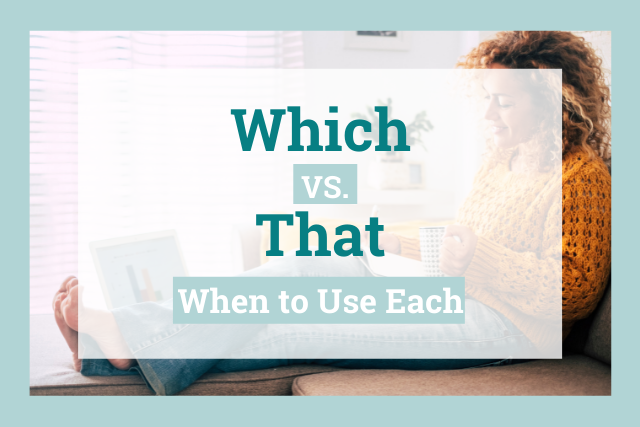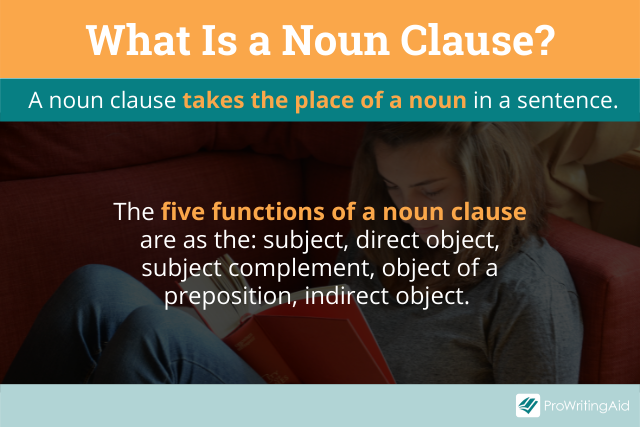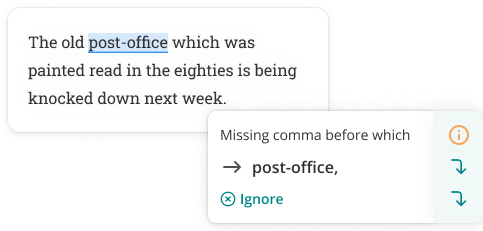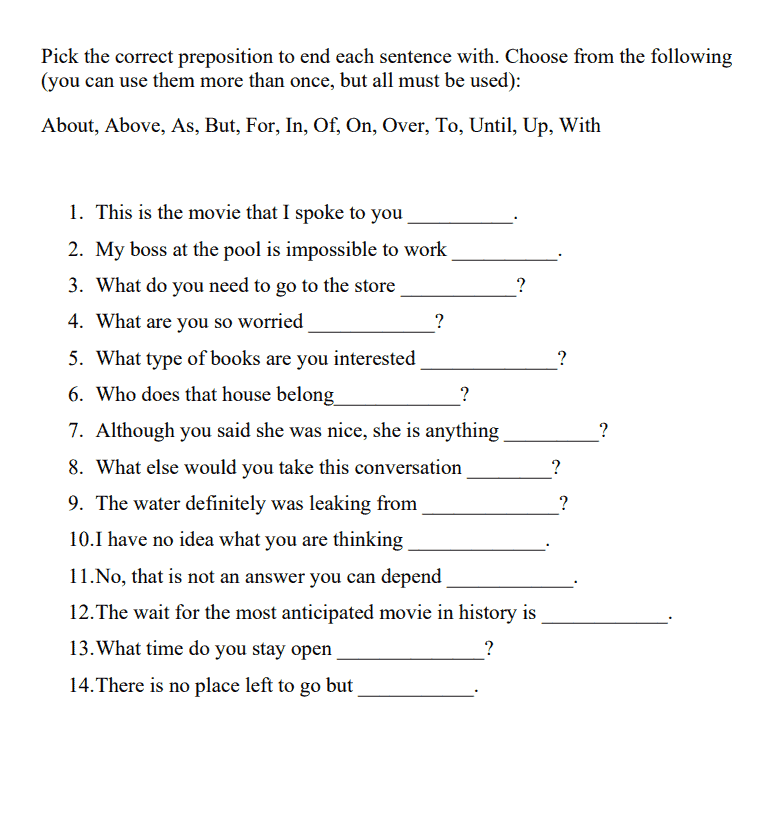Proper Usage of «That» in English
Updated on November 26, 2019
The word ‘that’ is a common word in English that is used in many different ways. Did you notice the use of ‘that’ in the previous sentence? In this case, ‘that’ was used as a relative pronoun as a complement. Often ‘that’ can be used or left out of a sentence entirely. For example, many English students know (that) you can leave out ‘that,’ depending on the instance. This guide to the use of ‘that’ will help you understand when to use the word, as well as when it’s okay to leave it out.
‘That’ as a Determiner
‘That’ is used as a determiner at the beginning of sentences to indicate one object which is far from the speaker. Note that the plural form of ‘that’ as a determiner is ‘those.’ ‘That’ and ‘those’ is generally used with ‘there’ to indicate that the object(s) is not close to the speaker.
Examples
- That’s my friend Tom over there.
- That’s a pencil you have in your hand.
- Those paintings are by Cezanne.
- That is my house on the corner of the street.
‘That’ as a Relative Pronoun
‘That’ can be used as a relative pronoun to connect two clauses. In this case, ‘that’ can also be substituted by ‘who’ or ‘which.’
Examples: That = Which
Tom bought the apples that the man was selling.
OR
Tom bought the apples which the man was selling.
Examples: That = Who
Peter invited the boy that was new in class.
OR
Peter invited the boy who was new in class.
‘That’ in a Clause as an Object
‘That’ can be used in clauses that act as the object of a verb.
Examples
- Jennifer hinted that she would be late for class.
- Doug knew that he needed to hurry up.
- The teacher suggested that we finish our homework.
‘That’ in a Clause as a Complement to a Noun or an Adjective
‘That’ can be used in a clause following a noun or an adjective as a complement. A complement helps give additional information about the noun or adjective. It answers the question ‘why.’
Examples
- Peter is upset that his sister wants to drop out of high school.
- Mr. Johnson appreciates our efforts that have brought in a lot of donations.
- She is certain that her son will be accepted to Harvard.
‘That’ Clause as Subject of a Sentence
‘That’ clauses can introduce a phrase acting as the subject of a sentence. This use of ‘that’ clauses is somewhat formal and is not common in everyday speech.
Examples
- That it is so difficult is hard to understand.
- That Mary feels so sad is very upsetting.
- That our teacher expects us to do two hours of homework every day is crazy!
The Fact That …
Related to the use of ‘that’ clauses as a subject is the more common phrase «The fact that…» to introduce a sentence. While both forms are correct, it is much more common to begin a sentence with the phrase «The fact that….»
Examples
- The fact that he wants to see you should make you happy.
- The fact that unemployment is still high proves what a difficult economy this is.
- The fact that Tom passed the test shows how much he has improved.
Compound Conjunctions with ‘That’
There are a number of compound conjunctions (words that connect) with ‘that.’ These expressions tend to be used in formal English and include:
«in order that,» «so that,» «providing that,» «in case that,» «now that,» «given that»
Examples
- He purchased the computer so that he might improve his typing.
- Susan told him she would marry him providing that he found a job.
- Alice feels happy now that she has moved into a new home.
After Reporting Verbs
‘That’ can be dropped after reporting verbs such as say (that), tell someone (that), regret (that), imply (that), etc.
Examples
- Jennifer said (that) she was in a hurry.
- Jack told me (that) he wanted to move to New York.
- The boss implied (that) the company was doing very well.
After Adjectives
Some adjectives can be followed by ‘that’ when answering the question ‘why.’ ‘That’ can be dropped after the adjective.
- I’m happy (that) you found a new job.
- She’s sad (that) he’s going to move to New York.
- Jack is anxious (that) he didn’t pass the test.
As Object in Relative Clauses
It’s common to drop ‘that’ when it is the object of the relative clause it introduces.
- He invited the boy (that) he met on the train.
- Shelly purchased the chair (that) she had seen at the auction.
- Alfred wants to read the book (that) Jane recommended.
Continue Learning about English Language Arts
Can you end a sentence with the word then?
no u cannot end a sentence with the word then.
Both the question, and the above answer, end with the word
then…
Can you end a sentence with the word at?
A sentence can end with the word at,such as:Who are you looking at? Where is your head at?
Can you end a sentence with the word became?
a sentence with became
Can you end a sentence with the word also?
Yes.
«Either» is used at the end if the sentence is negative.
Can you end a sentence with the word of?
Not many sentences do, but you can try!
Hint: You can end a sentence with the words ‘heard of’
I am adding to what StoneyB said in answer to the question, «When can I remove the word “that” in a sentence?» I was asking the same question myself, about when to or not to use «that.» The sentences I was unsure of using were «I am sorry that I did not call you,» or «I am sorry I did not call you.»
While reading StoneyB’s response, I was having a hard time absorbing to «parts of speech» terminology. I never did well with that in high school — my solution was to verbalize the sentence in my mind and if it sounded correct, I went with it! This method may work okay for those who have heard and spoken Americanized English for a long time, but is not the best advice for the English Language Learner.
All I have done is to add some of my own personal examples and maybe clarify the parts of speech that StoneyB discussed in his post. I stand to be corrected by anyone, please.
Knowing when or when not to use the word «that» in a sentence when you feel that you use it too often:
Example 1 — «that» — relative pronoun:
«It’s the same meatloaf that (used as a relative pronoun) we had yesterday.»
You can leave out the «that» in the sentence above because «it acts as the direct object of the verb in the relative clause» (StoneyB, 2014).
Direct object of the verb? — Leave it out.
«It’s the same meatloaf we had yesterday.» — Correct.
However, if it is used as the »subject of the verb in the relative clause» (StoneyB, 2014), you could not leave it out:
«It’s the same meatloaf that (subject) won (verb) in the cook-off.»
Subject of the verb? — Leave it in.
«It’s the same meatloaf ___ won in the cook-off.» — Not correct.
Example 2 — «that» — subordinating conjunction:
«I am sorry that (used as a subordinator) I did not call you.»
That appears in front of the subordinate clause and behind the verb (am), in the main clause.
«I am sorry I did not call you.»
Both uses are fine.
Example 3 — «that» — subject of the sentence:
If «that» is the subject of the sentence, it cannot be left out:
«That I am inconsiderate is a matter to be discussed later.» — Correct.
Example 4 — «that» — conjunction which does not appear and is not spoken close to the main verb in the sentence:
When the verb in the main clause is separated from the subordinate clause by a lot of other words, such as those used as part of an adverbial phrase, the that must remain for clarity in writing. In spoken English, it may be okay to leave it out, but it sounds a bit lazy to me.
Formal writing: «I am sorry in so, so, very many ways that (still used as a conjunction) I did not call you.» — Correct.
Spoken English: «I am sorry in so, so, very many ways I did not call you.» — Okay, but awkward.
Example 5 — «that» — predicative complement used with a verb:
Without the predicative complement, the sentence would not tell us much — for example, «Many folks thought,» does not stand well on its own, giving very little information about what was thought.
«Many folks thought that my meatloaf was better.» — Correct.
«Many folks thought my meatloaf was better.» — Okay in speech, but not so good in writing.
Sources:
English Language Learners Stack Exchange, (2014). When can I remove the word «that» in a sentence? — asked by T2E on May 26, 2013. Answered by StoneyB on May 27, 2013, edited March 7, 2014.
Englishpage, (2015). Forum thread: English Language Questions: Predicative Complement. Asked by Camilus, Member, April 17, 2004. Answered by Pete, Super Moderator, April 19, 2004.
http://www.englishpage.net/showthread.php?655-Predicative-Complement
The demonstrative adjectives this/that/these/those, which may also be pronouns, tell us where an object is located and how many objects there are.
| This and that are used to point to one object. This points to something nearby, while that points to something “over there.” | |
| Examples: | This dog is mine. This is mine. That dog is hers. That is hers. |
| These and those refer to more than one object. These points to things nearby, while those points to things “over there.” | |
| Examples: | These babies have been smiling for a while. These are mine. Those babies in the nursery have been crying for hours. Those are yours. |
Advertisement
If the article or the existing discussions do not address a thought or question you have on the subject, please use the «Comment» box at the bottom of this page.
Top Grammar Blog Posts
Many people use “which” and “that” interchangeably but the two words are not synonymous.
“Which” and “that” both refer to something previously mentioned when introducing another clause.
The difference between them is “which” introduces a non-essential clause and “that” introduces an essential one.
Read on to learn how to identify clauses and subsequently use the right word every single time.
The Trick for Remembering Which vs. That
There’s a simple trick to remember the difference:
If your sentence has a clause but does not need it, use “which”; if the sentence does need the clause, use “that.”
Before we look at when to use “that” or “which,” let’s quickly discuss what a clause is.
What Is a Clause?
A clause is a group of words that contains a subject and a predicate.
A subject is the thing that the clause is about. A predicate contains the verb and says something about the subject.
Examples of clauses are:
- When I was running (dependent)
- That went missing yesterday (dependent/adjective)
- I ate pasta and apple crumble (independent)
There are two main types of clauses: independent and dependent.
Dependent clauses can be split further into noun and adjective clauses.
Within these categories, there are two types of noun clauses, restrictive and non-restrictive, which are essential to understand the difference between “which” and “that.”
Which vs. That: Let Us Explain
The clause that comes after the word “which” or “that” is the determining factor in deciding which one to use.
If the clause is essential to the meaning of the sentence, you use “that.”
If you could drop the clause and leave the meaning of the sentence intact, use “which.”
For example:
- The school that burned down last week is still smoking.
- The school, which burned down last week, is next to Mila’s restaurant.
In the first sentence, the clause “that burned down last week” is essential because it identifies the school that is still smoking. Without the clause, we could refer to any school. With an essential clause, use the word “that.”
In the second sentence, the clause “which burned down last week” is non-essential because it is unnecessary to identify the school. Without it, the sentence would still make sense. With a non-essential clause, use the word “which.”
How to Use Commas with Which vs. That
“Which” and “that” are relative pronouns that begin adjective clauses. Both tell us a little more about the noun they follow.
The clauses that start with “that” are called restrictive because they ONLY tell us about the noun being discussed and are not surrounded by commas.
The “which” clause is non-essential or non-restrictive and is always set off from the rest of the sentence with commas.
Examples of When to Use Which vs. That
- The old schoolhouse, which is one of my favorite historical sites to visit, is in dire need of renovation.
In this case, you could drop the clause “which is one of my favorite historical sites to visit” and the sentence would still make sense.
On the flip side, try this example:
- The type of antibiotic that the doctor prescribed made me nauseous.
Clearly, it’s not just any antibiotic, but the one the doctor prescribed that made you sick to your stomach. The sentence without the clause doesn’t make sense.
Start Editing Like a Pro
Once you’ve checked your use of “which” and “that,” use ProWritingAid to make sure the rest of your sentence is stylistically and grammatically correct, too.
Our Realtime report lets you see and fix grammar, style, and spelling issues quickly. If you would like to know more about a suggestion, just click on the orange “i.”
You’ll see articles and videos to help you learn as you edit.
Extended Example of Which vs. That
In some sentences, both “which” and “that” are grammatically correct but provide slightly different meanings, like in the example below.
- Our home, which has four bedrooms, is located in the Caribbean.
- Our home that has four bedrooms is located in the Caribbean.
The first sentence discusses the location of your only home and it just so happens to have four bedrooms. Lucky you, it’s in the Caribbean.
The second sentence points out that the home you own with four bedrooms is located in the Caribbean, which means you have more than one home. “That has four bedrooms” is how you distinguish between your many homes.
Which vs. That: Quiz
Now that you know how to use “which” and “that,” are you ready for a quick test? I have omitted all commas because otherwise it would be too easy.
1) The lion __ I saw at the zoo scared me.
2) My summer chemistry project __ I handed in yesterday got an A!
3) My dress __ I wore last week has a hole in it.
4) My boat __ is at the summer house in Devon was repainted last week.
5) Jupiter __ is next to Saturn is the largest planet in our solar system.
Answers: 1) either 2) which 3) that 4) either 5) which
A big congratulations if you got all of them right because I was a little mean with sentences 1 and 4. Both the words “that” and “which” are grammatically correct depending on whether you have seen lions in the wild and how many boats the speaker has.
In sentence 4, if they have multiple boats then “that” is correct because it is necessary to identify which boat they are discussing. If they only have one boat then “which” is correct because we would already know where the boat is located and therefore the clause is not essential.
As a writer (me) once said:
“That which confuses you can only make you a better writer.”
Do you have any sentences like this that use both “which” and “that”? Share them in the comments.
Take your writing to the next level:
20 Editing Tips From Professional Writers
Whether you are writing a novel, essay, article or email, good writing is an essential part of communicating your ideas.
This guide contains the 20 most important writing tips and techniques from a wide range of professional writers.

You’ve probably heard that you can never, under any circumstances, use a preposition at the end of a sentence. However, there are plenty of opportunities to use a preposition in this manner, and if it makes your sentence sound more natural, it is absolutely acceptable.
Below we review what a preposition is, how it can be used, when it is acceptable to end a sentence with one, and how to make corrections when it may be frowned upon. Use these rules and examples to ensure your writing is clear and concise.
Can I End a Sentence With a Preposition?
Ending a sentence with a preposition is acceptable during informal writing and casual conversation. It is frowned upon when used in a formal context or when the preposition is missing an object.
What is a Preposition?
A preposition is a word or group of words that show direction, time, location, place, spatial relationships, or introduce an object. They are relationship words used before a noun, noun phrase, or pronoun and are crucial for effective communication.
There are over a hundred prepositions you can take advantage of, but the most common are those we use in everyday speech and writing. Frequently used prepositions include:
| about | above | across |
| after | against | along |
| among | around | as |
| at | before | behind |
| between | but | by |
| during | except | for |
| from | in | like |
| next to | of | off |
| on | over | past |
| than | through | to |
| until | up | with |
Ending a Sentence With a Preposition: When You Can and When You Can’t
There are various instances when you can and can’t use prepositions at the end of a sentence. We use them more often in speech than in writing due to the higher instances of casual conversation we involve ourselves with (see what I did there?). But, it is entirely acceptable to use them in writing as well to create an informal tone.
However, avoid them during formal instances, and make sure you present your words properly.
When to End a Sentence With a Preposition
There are many opportunities to use a preposition at the end of a sentence. The phrasing of these sentences is generally more conversational and, therefore, much more relaxed.
In Informal Conversation and Writing
Informal settings allow for prepositional endings in conversation and writing. You most likely already do it when speaking to friends and family or in a casual atmosphere. It might also sound awkward not to use a preposition at the end, making it acceptable in this scenario as well.
For Example:
- Who are you talking about?
- I have no idea what I’m hungry for. Vs. I have no idea for what I’m hungry.
If the Preposition Is Part of an Informal Phrase
When the preposition is included in an informal phrase at the end of a sentence, its use is also acceptable.
For Example:
- Six excited preschoolers were almost too much to put up with.
When an Idiom or Colloquialism Ends a Sentence
Some idioms and colloquialisms end in prepositions, and if you use them in sentences, they are appropriate to place at the end as well.
For Example:
- A good mechanic is hard to come by.
When NOT to End a Sentence With a Preposition
When speaking or writing to people you may not know for work or school assignments, it is best to take a more formal approach and avoid end of sentence prepositional use. When proofreading and editing these types of examples, consider moving prepositions within the sentences.
In Formal Writing
The audience usually determines formal writing. If you are writing for work, an event, or to people you want to communicate clearly and concisely to, avoid the informal tone suggested with the placement of prepositions at the end of a sentence.
For Example:
- The early Triassic is the era on which I’m focused. Vs. the early Triassic is the area I’m focused on.
- Romantic literature is a subject about which Ruby knows nothing. Vs. Romantic literature is a subject Ruby knows nothing about.
Prepositions and the Passive Voice
A passive voice in writing occurs when you might not know the subject of a sentence, or who is performing an action. It ends in a preposition and is easy to correct. However, there is nothing wrong with using it, even though traditional grammarians consider it a no-no. Just be sure that you have no other way to clarify the sentence without it sounding awkward.
For Example:
- The game has been called off. Vs. The game was rescheduled.
- The issue was dealt with. Vs. The boss dealt with the issue.
Unnecessary Prepositions
Sometimes, sentences end with a preposition because too many are in the sentence. These are easy to edit for clarity and to help avoid wordiness.
For Example:
- The whites and colored laundry need to be separated out. Vs. The whites and colored laundry need to be separated.
- Sanna is confused about where she is going to. Vs. Sanna is confused about where she is going.
Examples of Using Prepositions at the End of Sentences
As with many grammar and usage rules, the question of whether or not to end sentences with prepositions is ultimately a matter of taste.
These arbitrary rules have never hampered great writers and influencers, and sentence-ending prepositions can be found in some of the most beautiful writing in the English language.
Ending a Sentence With “Is”
- Winning isn’t everything, but wanting to win is. [Vince Lombardi]
Ending a Sentence with “On”
- When you reach the end of your rope, tie a knot in it and hang on. [Franklin D. Roosevelt]
- In three words I can sum up everything I’ve learned about life: it goes on. [Robert Frost]
Ending a Sentence With “Up”
- Many of life’s failures are people who did not realize how close they were to success when they gave up. [Thomas A. Edison]
Ending a Sentence With “With”
- Finn the Red-Handed had stolen a skillet and a quantity of half-cured leaf tobacco, and had also brought a few corn-cobs to make pipes with. [Mark Twain]
Ending a Sentences With “To”
- There was a little money left, but to Mrs. Bart, it seemed worse than nothing the mere mockery of what she was entitled to. [Edith Wharton]
- It’s funny. All one has to do is say something nobody understands and they’ll do practically anything you want them to. [J D Salinger]
Ending a Sentence With “Of”
- Mr. Barsad saw losing cards in it that Sydney Carton knew nothing of. [Charles Dickens]
Ending a Sentence With “For”
- Then she remembered what she had been waiting for. [James Joyce]
- There is some good in this world, and it’s worth fighting for. [J.RR. Tolkein]
Ending a Sentence With “Out”
- Time, which sees all things, has found you out. [Oedipus]
- Things work out best for those who make the best of how things work out. [John Wooden]
Ending a Sentence with “Over”
- For you, a thousand times over. [Khaled Hosseini]
Let’s Review and a Worksheet to Download
Although we use many prepositions in everyday language, some of the most common ones make their way to the end of a sentence. This use is often casual and works to help a sentence flow. However, you want to avoid their use in formal settings if you can. Also, look for unnecessary use even in an informal situation, and correct the sentence for clarity.
Unit 92- Part A
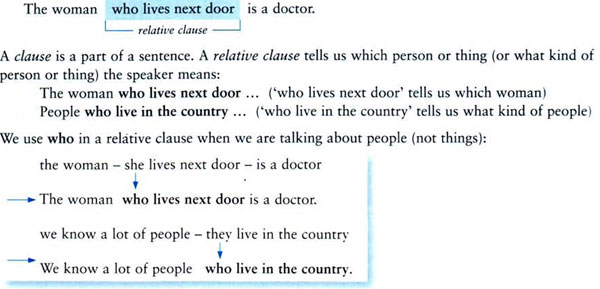
|
| • An architect is someone who designs buildings. • What was the name of the person who phoned you? • Anyone who wants to apply for the job must do so by Friday. You can also use that (instead of who), but you can’t use which for people: • The woman that lives next door is a doctor. (not the woman which) Sometimes you must use who (not that) for people – see Unit 95. |
Unit 92- Part B
Unit 92- Part C
What = ‘the thing(s) that’. Compare what and that:
• What happened was my fault. (= the thing that happened)
• Everything that happened was my fault. (not Everything what happened)
• The machine that broke down is now working again. (not The machine what broke down)
Unit 92- Part C
Remember that in relative clauses we use who/that/which, not he/she/they/it:
• I’ve never spoken to the woman who lives next door. (not the woman she lives)
Exercises
{slide=1 In this exercise you have to explain what some words mean.}
{/slide} {slide=2 Make one sentence from two.}Make one sentence from two. Use who/that/which.
{tooltip}Key.{end-link}2 The waitress who/that served us was impolite and impatient.
3 The building that/which was destroyed in the fire has now been rebuilt.
4 The people who/that were arrested have now been released.
5 The bus that/which goes to the airport runs every half hour.{end-tooltip}
1 A girl was injured in the accident. She is now in hospital.
The girl who was injured in accident is now in hospital.
2 A waitress served us. She was impolite and impatient.
The _________________________________________________
3 A building was destroyed in the fire. It has now been rebuilt.
The _________________________________________________
4 Some people were arrested. They have now been released.
The _________________________________________________
5 A bus goes to the airport. It runs every half hour.
The _________________________________________________ {/slide} {slide=3 Choose the best ending from the box and change it into a relative clause.}Complete the sentences. Choose the best ending from the box and change it into a relative clause.
{tooltip}Key.{end-link}2 who/that runs away from home
3 that/which were on the wall
4 that/which cannot be explained
5 who/that stole my car
6 that/which gives you the meaning of words
7 who/that invented the telephone
8 that/which can support life{end-tooltip}
| he invented the telephone she runs away from home they stole my car they were on the wall |
it makes furniture it gives you the meaning of words it can support life it cannot be explained |
{/xtypo_rounded3}
1 Barbara works for a company that makes furniture
2 The book is about a girl _______________________
3 What happened to the pictures _______________________
4 A mystery is something _______________________
5 The police have caught the men _______________________
6 A dictionary is a book _______________________
7 Alexander Bell was the man _______________________
8 It seems that the earth is the only planet _______________________ {/slide} {slide=4 Are these sentences right or wrong?}Are these sentences right or wrong? Correct them where necessary.
{tooltip}Key.{end-link}3 that/which sells
4 who/that caused
5 OK (who took is also correct)
6 that/which is changing
7 OK (which were is also correct)
8 that/which won{end-tooltip}
| 1 I don’t like stories who have unhappy endings. 2 What was the name of the person who phoned you? 3 Where’s the nearest shop who sells newspapers? 4 The driver which caused the accident was fined £500. 5 Do you know the person that took these photographs? 6 We live in a world what is changing all the time. 7 Dan said some things about me that were not true. 8 What was the name of the horse it won the race? |
stories that have |
{/slide}
Компания www.dobropo.ru предлагает услуги по качественной разработке планов эвакуации. План эвакуации при пожаре – документ, в котором указаны эвакуационные пути и выходы, а также порядок и последовательность действий людей при возникновении пожара.

